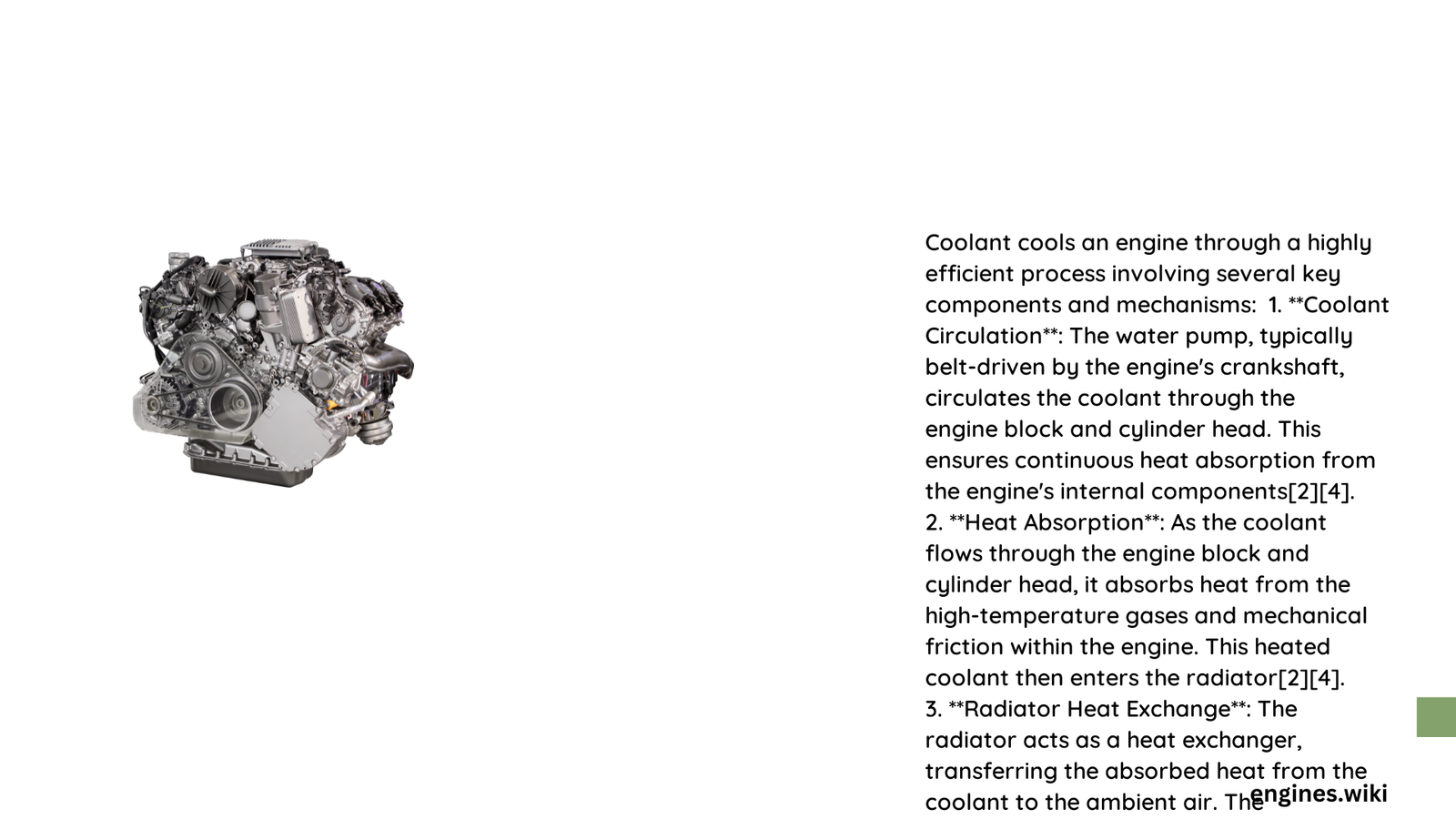Engine cooling is a sophisticated thermal management process where specialized liquid coolants absorb, transport, and dissipate heat generated by internal combustion engines. Through complex heat transfer mechanisms involving conduction, convection, and radiation, coolants prevent engine overheating, maintain optimal operating temperatures, and ensure mechanical efficiency and longevity.
What Makes Coolant Essential for Engine Temperature Control?
How Do Thermodynamic Principles Enable Coolant Functionality?
Coolant operates through three primary heat transfer mechanisms:
- Conduction
- Direct molecular energy transfer from engine metal surfaces
- Occurs through direct contact between coolant and engine block
-
Enables rapid initial heat absorption
-
Convection
- Liquid movement transports thermal energy
- Driven by water pump circulation
-
Distributes heat throughout cooling system
-
Radiation
- Thermal energy emission from hot surfaces
- Supplementary heat dissipation mechanism
- Most effective at higher temperatures
What Specific Properties Define Coolant Performance?
| Coolant Property | Typical Value | Significance |
|---|---|---|
| Specific Heat Capacity | 3.6-4.2 J/g°C | Heat absorption capability |
| Freezing Point | -34°C to 0°C | Winter operation protection |
| Boiling Point | 105-129°C | Prevents system vaporization |
Why Does Coolant Composition Matter?
Typical coolant mixtures combine:
– 50% Ethylene Glycol
– 50% Distilled Water
– Corrosion inhibitors
– Anti-foaming agents
Key Advantages of Modern Coolant Formulations
- Extended temperature range tolerance
- Enhanced heat transfer efficiency
- Reduced corrosion risk
- Improved lubrication for water pump
How Does Coolant Navigate Through Engine Cooling System?
The coolant’s journey involves multiple critical stages:
- Engine Block Absorption
- Absorbs heat directly from cylinder walls
- Temperature can reach 90-100°C
-
Prevents metal deformation and structural damage
-
Pump Circulation
- Water pump generates continuous fluid movement
- Typical flow rates: 40-50 liters per minute
-
Ensures consistent heat distribution
-
Thermostat Regulation
- Controls coolant flow based on engine temperature
- Opens around 80-90°C
- Prevents overcooling and maintains optimal operating range
What Challenges Affect Coolant Performance?
Critical performance limitations include:
– Viscosity variations
– Potential air pocket formation
– Mineral deposit accumulation
– Thermal stress on system components
How Can Optimal Coolant Efficiency Be Maintained?
Recommended maintenance practices:
– Regular coolant level checks
– Periodic system flush
– Use of manufacturer-recommended coolant
– Temperature and pressure system inspections
Technical Insights: Quantitative Coolant Performance

Heat Transfer Equation:
[Q = m \cdot c \cdot \Delta T]
Where:
– (Q): Heat transferred
– (m): Coolant mass flow rate
– (c): Specific heat capacity
– (\Delta T): Temperature difference
Conclusion
Coolant represents a sophisticated thermal management solution, transforming potentially destructive engine heat into manageable thermal energy through intricate scientific principles.
